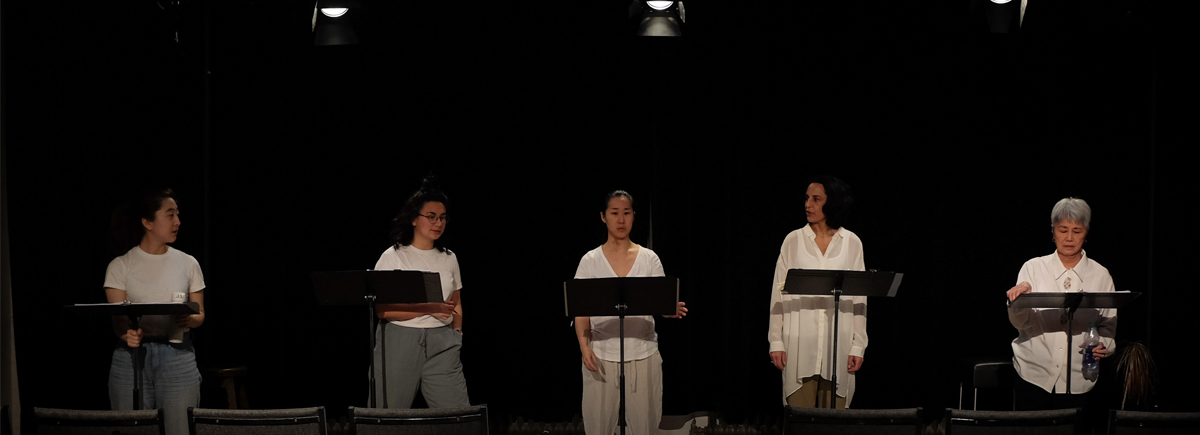We’re back at
Playwrights’ Workshop Montréal before winter folds in on herself for another round of workshopping – this time in preparation for the first publicly staged reading of
Mizushōbai (The Water Trade), which Tableau D’Hôte Theatre is commissioning as part of its
More than a Footnote program. The script has been in gradual development since 2017 in the company’s inaugural initiative to stage contemporary Canadian works through the program, and it’s an exciting milestone to at last be bringing it from its embryonic stages to its bare feet in front of a discerning audience.
Julie Tamiko Manning pens this original piece in poetic exploration of the little-known life of
Kiyoko Tanaka-Goto, a Japanese entrepreneur who came to Canada in 1916 as a 19-year-old picture bride. Kiyoko is most prominently noted in mainstream media as having been a brothel owner in Vancouver, but Julie here shatters the sexualized and submissive Asian stereotypes to reveal through the cracks the light of Kiyoko, the woman – a female warrior defiant of all odds and expectations.
“Unearthing” is the recurring term that dramaturg Emma Tibaldo uses to describe this particular process converging the bodies and minds of playwright, director and actors in the room. It seems most fitting given Kiyoko’s buried biography. There is so little source material about her out there. At times the drill of digging is simply one of reaching for deeper truths of presumable character; at others it’s about the oftentimes more difficult task of finding exactly where on the surface to excavate. There are enough holes in history here to fill.
It proves a challenge. Kiyoko is as transparent as she is enigmatic, vulnerable as she is armoured, and, perhaps most pressingly – no longer present in our human realm to relate her own memories.
I fret little in this reclamation of her narrative, though. Mizushōbai is in the most capable of hands.
It is not my place to comment on certain cultural aspects of the play (I am Brazilian, not Japanese), but at some point during the workshop it suddenly strikes me what Canadian theatre is (to me). This piece is it: the reflection of an identity and a diversity of identities shaped by the experience of living here. And, despite its cultural specificity, it speaks to a commonality of circumstances that I finding myself intimately relating to in this layering of nations upon nations.
This enlightening moment for the connective circuitry in my brain then leads me to the following questioning: as an immigrant, what is my responsibility to this country as an embraced citizen, and where does my voice add value in this plurality of perspectives? I do not feel at ease moving into someone else’s home if I cannot contribute to it.
Kiyoko was, even in her rather unorthodox terms, a remarkable contributor to Canadian society. Her desire for autonomy and independence drove her machinal work ethic. She demonstrated great care for every community she found herself in. One can only aspire to such a legacy.
The question of legacy then becomes personal (being privvy to the contemplative conversations of a playwriting workshop can be an existential exercise, mind you). Like Kiyoko, I question my own concerns towards marriage and children. My instincts and desires do not lead me down paths of conventional life choices. I have no delusions of extraordinary fame or wealth. What is one’s bequest, then, if, even in their realization of the “impermanence of it all” (as is beautifully punctuated in Mizushōbai), they opt to interrupt the order and cyclical flow of nature?
“This play is her legacy,” our team of women collectively realizes of Kiyoko, whose story would have perhaps been destined for erasure – or retelling by men – had Julie and Tableau D’Hôte not picked it up otherwise.
And it hits me.
Theatre – art – is our legacy, our cascading contribution to humanity, our transfer of memory at the cellular level.

